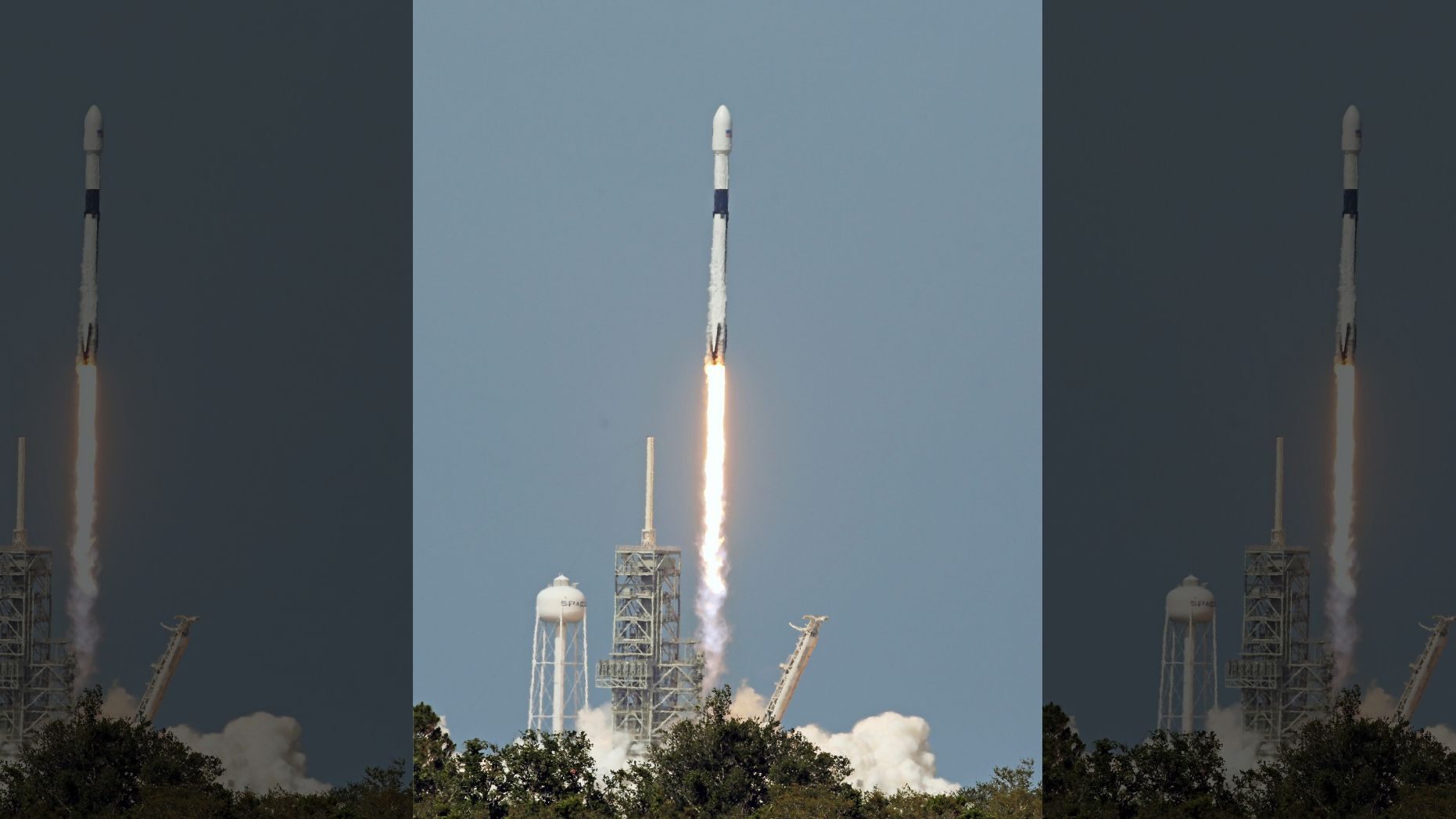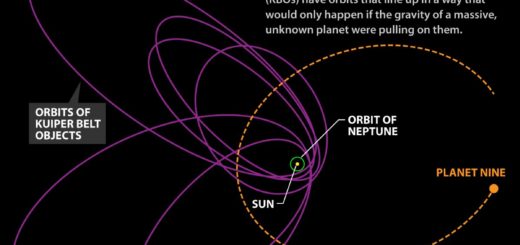Elon Musk says SpaceX will reuse a rocket within 24 hours in 2019

An upgraded version of the SpaceX Falcon 9 Block 5 rocket lifts off Friday, May 11, 2018 from launch pad 39A at the Kennedy Space Center carrying Bangladesh’s first communications satellite. The $250 million satellite, the nation’s first, is designed to improve television, telephone, data, Internet and emergency communications for Bangladesh. (Red Huber /Orlando Sentinel via AP) (Orlando Sentinel)
SpaceX has big plans for the latest version of its workhorse Falcon 9 rocket.
The new “Block 5” Falcon 9, which debuted Friday (May 11) with a flawless launch and first-stage landing, will take rocket reusability to bold new heights very soon if everything works out, SpaceX founder and CEO Elon Musk said.
“Our goal, just to give you a sense of how reusable we think the design can be — we intend to demonstrate two orbital launches of the same Block 5 vehicle within 24 hours, no later than next year,” Musk said during a prelaunch teleconference with reporters on Friday. [See the Evolution of SpaceX’s Rockets in Pictures]
Making this happen won’t be easy, Musk stressed, “because there’s only so much work you could even do in one day, and a bunch of it consists of transporting the rocket from its landing site back to the launch site, mounting a new satellite on the rocket and loading propellant.”
Previous iterations of the two-stage Falcon 9 have been reusable, of course; before Friday’s mission, SpaceX had successfully landed 24 Falcon 9 first stages and reflown such landed boosters 11 times.
These activities are part of the company’s quest to develop fully and rapidly reusable rockets and spacecraft, which Musk has said could slash the cost of spaceflight enough to make ambitious goals such as Mars colonization economically feasible. (Musk has expressed a desire to also recover and re-fly the Falcon 9’s upper stage and its payload fairing, the protective nose cone that surrounds satellites during launch. But SpaceX has reused just Falcon 9 first stages to date.)
So far, however, the time lag between booster landings and reflights has been significant. Take the most recent launch of a “flight-proven” Falcon 9 first stage. This April 2 liftoff, which sent SpaceX’s robotic Dragon cargo capsule toward the International Space Station (ISS) on a resupply run for NASA, used a “Block 4” Falcon 9 booster whose maiden flight occurred in August 2017. (The April 2 mission also employed a pre-flown Dragon vehicle, marking another big reusability milestone for SpaceX.)
The experience and expertise SpaceX has gained in rocket reuse will help the company get future landed boosters off the ground faster and more often, Musk has said. And so will the many upgrades the company has made to the new Block 5, he added on Friday.
These upgrades include advanced “grid fins” on the first stage made of titanium (as opposed to aluminum); these help the booster steer itself back down to Earth for pinpoint vertical touchdowns.
The new fins are “capable of withstanding [temperatures] on the order of 1,000 degrees Celsius, 2,000 degrees Fahrenheit, thereabouts,” Musk said. And they require “no work between flights, which is also great.”
The first-stage heat shield is “also a big improvement,” he added. “So, we replaced the old composite structure with a high-temperature titanium structure to support rapid reuse.”
Indeed, the Block 5 first stage is designed to fly 10 times with just inspections between landing and liftoff, and perhaps 100 times or more with some maintenance work involved, Musk said. First stages of previous Falcon 9 iterations have flown a maximum of two orbital missions.
The Block 5 also features many reliability upgrades, which were implemented to meet NASA’s stringent crew-carrying requirements. SpaceX holds a multibillion-dollar contract to fly NASA astronauts to and from the ISS, and the company will use the Block 5 and Dragon to perform these missions. (Boeing also holds a NASA commercial-crew contract, which that company will fulfill using its CST-100 Starliner capsule and United Launch Alliance Atlas V rockets.)
“It’s really better in every way than the Block 4,” Musk said. “This rocket is really designed to be — the intent is to be the most reliable rocket ever built.”
SpaceX will probably build 30 to 50 Block 5 Falcon 9 vehicles, which will fly perhaps 300 missions or so, Musk added. But that will probably be it for the Falcon 9. The Block 5 is the last major iteration of the rocket, and SpaceX eventually aims to retire the Falcon 9, along with Dragon and the recently debuted Falcon Heavy rocket, in favor of the BFR spaceflight system, which is currently in development.
The reusable BFR, which consists of a giant rocket and a 100-person spaceship, will take people to and from Mars and also launch satellites, clean up space junk, transport passengers on superfast “point-to-point” trips around Earth and do whatever else SpaceX needs the craft to do. If everything goes well, the BFR could launch on its first Mars mission in the mid-2020s, Musk has said.



 Creators of mankind
Creators of mankind Description of “Tall white aliens”
Description of “Tall white aliens” Where they came from?
Where they came from? About hostile civilizations
About hostile civilizations The war for the Earth
The war for the Earth “Tall white aliens” about eternal life
“Tall white aliens” about eternal life Video: “Nordic aliens”
Video: “Nordic aliens” Aliens
Aliens Alien encounters
Alien encounters The aliens base
The aliens base UFO
UFO Technology UFO
Technology UFO Underground civilization
Underground civilization Ancient alien artifacts
Ancient alien artifacts Military and UFO
Military and UFO Mysteries and hypotheses
Mysteries and hypotheses Scientific facts
Scientific facts


















